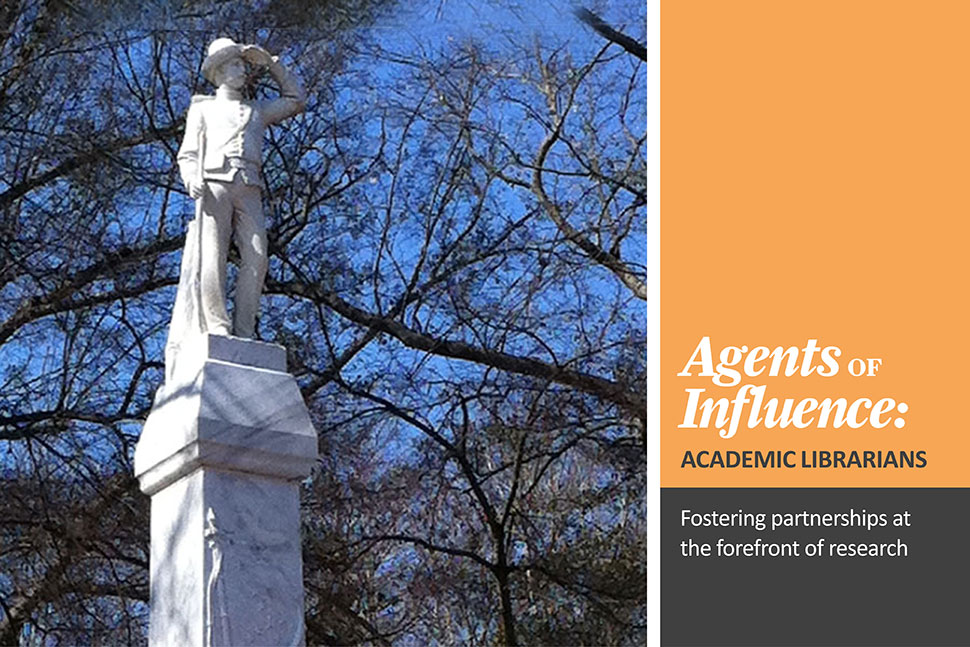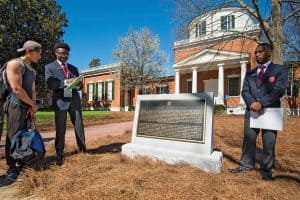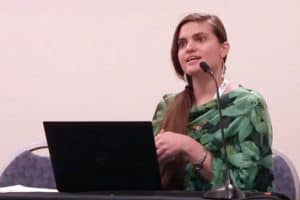
In this multipart series, American Libraries presents case studies and interviews with thought leaders looking at research trends in academic libraries. We’ll be covering the topics of social justice, information literacy, digital archives, faculty outreach, and new technology. This is the sixth story in the series.
Librarians and archivists at University of Mississippi continue to play a key role in the ongoing debate over monuments and buildings across campus named after racist figures. Like their counterparts at universities across the country, library staffers at Ole Miss have provided historic documents and created LibGuides to help facilitate the conversation.
It’s been more than two years since the university chose to rename one of its buildings—Vardaman Hall, named after white supremacist and former Gov. James K. Vardaman—and place plaques to contextualize other controversial monuments on campus. While those two topics have been addressed, advocates at the university continue to focus their sights on other questionable namesakes.
Archivist Leigh McWhite, who works at the University of Mississippi Libraries’ Archives and Special Collections, created the LibGuide “Contextualization at University of Mississippi” with librarian Amy Gibson in May 2017. She says the conversation now centers on the question of whether to take a Confederate monument prominently displayed on the Oxford campus and relocate it to a Civil War cemetery, also on campus. The university ultimately decided to relocate the memorial, but the board of trustees of the Mississippi Institutions of Higher Learning has yet to give its final approval.
From the Black Student Union’s protests against the school waving Confederate flags in 1970 to the removal of Colonel Reb as the university’s official mascot in 2003, McWhite says the university has a long history of debating the use of symbols connected to the state’s Confederate past.
Providing information and creating LibGuides is only part of the library’s role in the conversation about racism. McWhite instructs classes on conducting research with archives, and student research projects frequently focus on the topic of campus buildings and monuments that memorialize Confederate figures.
“We almost always have classes every semester that will consider these subjects,” she says.
McWhite often directs students to the contextualization LibGuide, which has been viewed nearly 1,000 times since its creation almost three years ago.
Students and academics are increasingly turning to online databases to advance their research. Those searching for original source material on the history of racism in the United States, for instance, might begin their search with Gale’s Political Extremism and Radicalism archive. The archive offers more than 600,000 pages of documents on topics such as the history of the Ku Klux Klan and the rise of the civil rights movement.
It’s a similar story at Oregon State University (OSU), which chose in 2017 to change the names of three buildings named after a proslavery newspaper owner and a proslavery US senator.
Natalia Fernández, curator at OSU’s Special Collections and Archives Research Center (SCARC) and archivist of the Oregon Multicultural Archives and OSU Queer Archives, published a case study in February 2019 chronicling the work of reviewing building names. Fernández and SCARC Director Larry Landis were central to the two-year process, working to collect data to review and facilitating meetings with the public to discuss the issue.
“That was the idea, that it would be a case study from the perspective of an archivist who served on a committee who facilitated this process,” she says.
The case study charts the archivist’s work drafting evaluation criteria, providing research assistance, and hosting six community meetings that seek public input. Fernández says the study is now being used in a history class at the university, where students learn to conduct archival research by reading the case study and searching the archive for its findings.
“It’s a bit of reverse engineering, getting them to think critically about the process,” Fernández says.
Ultimately, Fernández adds, the study can be used as a guide for other universities and institutions aiming to engage with the public with a transparent review of the issue.



